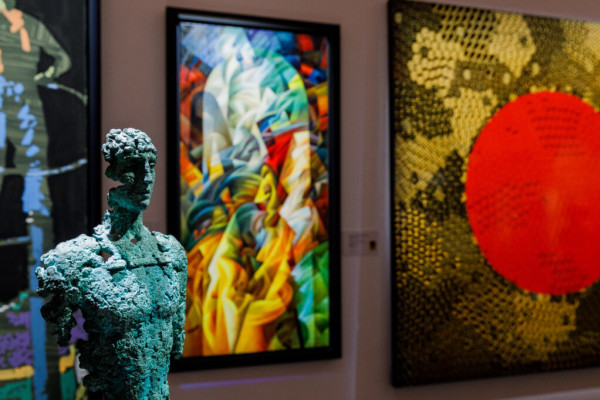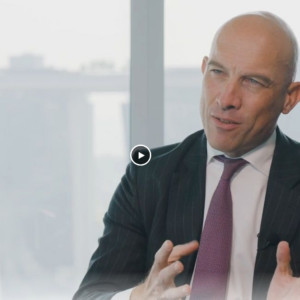How fine art can bring a dash of colour to investors’ portfolios

Fine art has been recognised as a store of monetary and cultural value for centuries and fractionalisation means it no longer need be the preserve of the ultra-rich
It has been an exceptionally challenging 2022 for almost all investors. Issues like the Russian invasion of Ukraine and rising inflation have not gone away, and the UK’s new chancellor has not given the market any more reason to be confident. We can all have sympathy for investors seeking safe havens.
Next week sees the start of Frieze London, one of the most important art fairs in the world. Fine art is an asset class that is often overlooked, but has been recognised as a store of monetary and cultural value for centuries, including during periods of market volatility and high inflation.
During the 2008/9 global financial crisis the S&P 500 saw a 47.7 per cent decline, however, the art market saw only a 19.3 per cent decrease from its highs. It took the S&P 500 took four years to return to its pre-recession high, a feat the art market achieved in under a year, according to Art Market Research. Aiding this, historically collectors hold onto their artwork during recessionary periods, contracting supply and stimulating demand.
While the pandemic saw the art market’s biggest recession for 10 years, it recovered strongly in 2021, with sales of art and antiques reaching an estimated $65.1bn, up by 29 per cent from 2020, according to a report by Art Basel and UBS. Like other industries, the sector moved quickly to digitise to attract new art collectors. Online sales of art and antiquities reached a high of $12.4bn in 2020, double the previous year.
An under-appreciated inflation hedge
Going further back to an era which parallels our own, throughout the 1970s and 1980s the maxim that there are only two certainties in life, ‘death and taxes’, became a triumvirate with the addition of inflation. The devastating economic realities that 1974 Britain faced proved to be the ‘necessity that was the mother of invention’ for a group of investors. The British Rail Pension Fund made the then bold decision to invest in art, investing £40m, spread over 2400 pieces. Those investments went on to deliver an annual return of 13 per cent between 1974-87, when inflation ranged between 3 per cent and 17 per cent and the S&P 500 index generated a return of 12 per cent.
How should investors approach art?
Despite its long history, and the central part it plays in our culture, most professional investors are unlikely to have much experience in art investment. Art is also something that may be considered especially difficult to value. There are, however, three attributes that we believe are important to consider and that, when considering investing, we strive to uncover.
First, the artwork in question must be truly authentic and representative of the artist’s style.
Second, works by the artist in question must have a long and sustained track record. We look for at least five years of auction performance inventory. This is vital to gauge the liquidity of an artist’s market: the longer the auction history, the deeper the established secondary market.
Finally, the artist must have international appeal. This considers the global spread of an artist’s collector base, auction record, and exhibition history. A geographically diverse exhibition history, and the presence in public and private collections all over the world, is indicative of wider international interest and appeal.
Why Frieze matters
The sheer positivity and buzz generated by Frieze is in stark contrast to the glum sentiment around traditional asset classes. Frieze London next week is fresh off the back of a hugely successful debut Frieze Seoul, which saw multi-million-dollar sales. This is clearly not a market which feels on the edge of a precipice.
Art fairs like Frieze are a great barometer of the market mood. It is an opportunity to gauge the most in-demand artists and wider market trends. It serves as a source of investment inspiration, and a chance to network and hear from other experienced and successful investors.
Solving the accessibility problem
Fine art has been considered off-limits to all but the very highest of high-net worth investors – someone would need a portfolio of around £100m ($111m) to invest in a £3m painting as part of a diversified portfolio.
The trend in fractionalisation of assets has helped solve this. With fractionalisation, investors can buy shares in unique pieces of contemporary art, meaning art can now be part of an investors’ larger diversified portfolio, alongside more traditional assets.
With the evidence over decades pointing to the effectiveness and resilience of art as an investment vehicle, a majority (85 per cent) of wealth managers recommending the inclusion of fine art in a balanced investment portfolio, according to Deloitte, and with the problem of accessibility now solved, art investment should no longer be seen as only the preserve of the ultra-rich.
Tamer Ozmen is founder and chief executive at Mintus, an art investment platform



